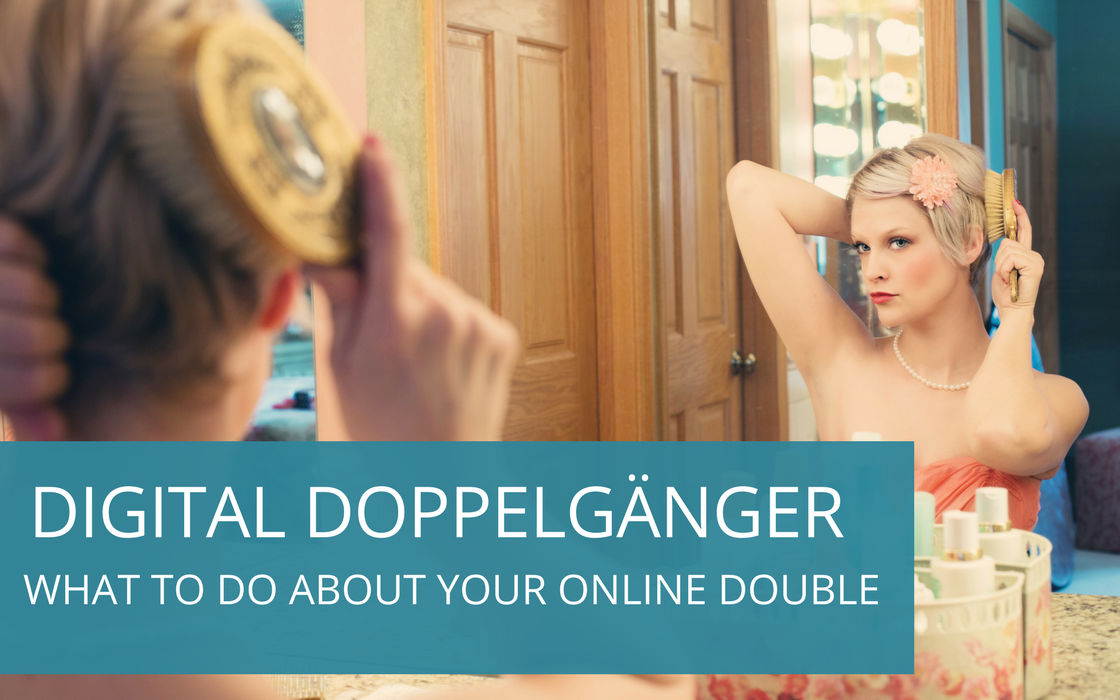“Today you are You, that is truer than true. There is no one alive who is Youer than You.” – Dr Seuss
No offence to Dr Seuss, but with 7.6 billion people out there and the internet bringing us closer each day it’s fairly common to stumble across another You online (or at least someone who could easily be mistaken for You).
A digital doppelgänger is someone who shares the same name as you and, as a result, a digital footprint across search results, social media and email. You were probably first made aware of your digital doppelgänger’s existence when trying to grab the coveted first name–last name combo for your email or social media handle.
In the dark ages (before internet), it didn’t matter much if there was someone out there with the same name and even the same job as you. If there were two copywriters named Jane Smith in different cities, few people would get confused.
Now, with so much of our existence happening online, it’s much harder to stake your name. A quick Google search brings up four different Nell Caseys on the first page. Quirky, but not totally unbelievable right?
What makes it more interesting is that three of us are writers (the other one is an actress). I mean what are the chances? (Honestly, what are they because that maths is too hard for me).
In real life, each of these Nell Caseys has their own hobbies, friends, interests and personality. But in the digital domain, it’s harder to distinguish one from the other. We are largely identified by our name, images and social media profiles.
Of course, I’m not the only one who has had to battle against their own digital doppelgänger to stand out online. When I mentioned this to a Facebook group, a few members piped in to share their own stories of their digital doubles.
“Fairly quickly, pictures of curvy ladies in underwear and Princess Kate appear.”
Through her SEO efforts, copywriter Kate Toon now dominates the first seven pages of search results for her name, although the image tab throws up some interesting results. “Fairly quickly, pictures of curvy ladies in underwear and Princess Kate appear. And there was a dentist called Kate Toone who outranked me in image search for years.” As for what it takes to stand out, Kate highlights the importance of clear title tags and meta descriptions that make your unique selling point clear so it’s harder for someone to mistake you for someone else. “I think the key is a little oddity and persistence.”
“One is a surveyor in the UK (a man!)”
Mel Kettle found out about the other Mel Kettles in the world thanks to Google Alerts. One is a male surveyor, and the other Mel Kettle uses her full name Melanie. Like Mel, she is in communications but living in the United Kingdom so there’s less chance for confusion.
While Mel appears in 90% of the search results for her name, she hasn’t done much to own the name. “I’m quite fortunate in that it’s not all that common! I’m also extremely active online having written blogs, hosted and been a guest on podcasts, quoted in media and written many guest articles/blog posts. I also do a lot of speaking so appear in quite a few conference programs.”
“I’m ranking for a city in a country I don’t even live in”
When it comes to her actual name, SEO Consultant Belinda Irvine is doing okay now. But for years her website didn’t rank because she avoided putting her surname on there. “Thankfully I can say that was three years ago and a lot has changed since then. I have an entire website dedicated to my name. And I’ve made sure my name is all over everything I post.”
Now her digital doppelgänger isn’t another person, but a city. Thanks to her surname, Belinda ranks for many of the keywords related to Irvine, Orange County in Los Angeles, USA. “The combination of my name and title being all over my site means these were many of the first keywords I ranked for – 17 of them, in fact, make reference to a country I don’t live in.” Belinda doesn’t see this as an issue, preferring instead to see the upside that ranking in a faraway city might lead to more clients.
How to outrank your digital doubles
Whether your business name is eponymous or something you’ve thought up, it’s important to be aware of potential digital doubles out there and take steps to ensure you appear on top for your key search terms.
Include your brand name when you upload your logo and images to your website and elsewhere, instead of just saving it as something like ‘logo.jpg’. Add your name to the filename of any images you have on file so when you need to send your logo or photos to someone, they’ll already be optimised for your name.
Set up Google Alerts to track mentions of your name and brand and be aware of the activity of your digital doubles. And regularly search for your name (in incognito mode) to see who else comes up and where they rank. If you’re unfortunate enough to share a name with someone famous, you’ll probably struggle to rank for just your name, but adding your location or title should allow people searching for you to find you.
Have you found your own digital double on the internet? Do people ever mistake you for another brand online? Share your story in the comments.


Leave A Comment